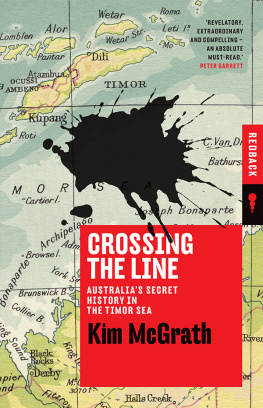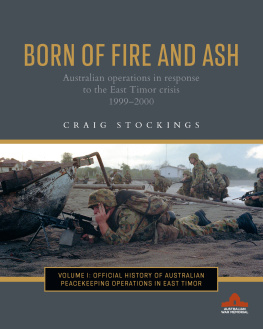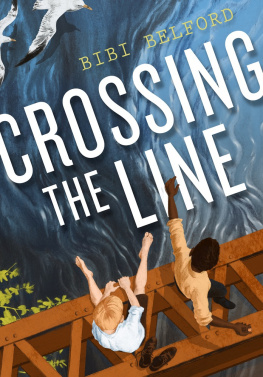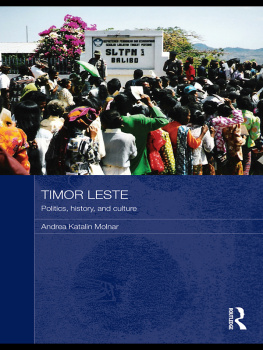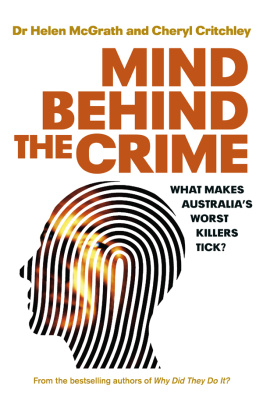Published by Redback Quarterly,
an imprint of Schwartz Publishing Pty Ltd
Level 1, 221 Drummond Street Carlton VIC 3053, Australia
www.blackincbooks.com.au
Copyright Kim McGrath 2017
Kim McGrath asserts her right to be known as the author of this work.
ALL RIGHTS RESERVED.
No part of this publication may be reproduced, stored in a retrieval system, or transmitted in any form by any means electronic, mechanical, photocopying, recording or otherwise without the prior consent of the publishers.
National Library of Australia Cataloguing-in-Publication entry:
McGrath, Kim, author.
Crossing the line: Australias secret history in the Timor Sea/Kim McGrath.
9781863959360 (paperback)
9781925435740 (ebook)
Offshore gas industry Timor Sea.
Offshore gas industry Moral and ethical aspects Australia.
Offshore oil industry Timor Sea.
Offshore oil industryMoral and ethical aspects Australia.
Timor-Leste Relations Australia.
Australia Relations Timor-Leste.
Cover design by Peter Long
Text design and typesetting by Peter Long
Cover image first published in the Readers Digest Great World Atlas, 1962
Harper Collins; maps courtesy of the Timor-Leste Maritime Boundary
Office; file in chapter 4 NAA: A10463, 801/13/11/10 Part 2; photos in chapter 4 NAA: A10463, 801/13/11/3 Part 5; Sydney Morning Herald article in chapter 5 Fairfax Syndication; photo in chapter 5 Lyndon Mechielsen/Newspix; file in A Note On The National Archives of Australia NAA: A1838, 1733/3/2 Part 7
INTRODUCTION
T he Palcio do Governo, with its white arched colonnade running parallel to the Dili foreshore, is one of the few Portuguese colonial buildings to survive the violence of Timor-Lestes turbulent past. It is where former Victorian premier Steve Bracks and I met with legendary resistance leader and then prime minister Xanana Gusmo, in September 2007. Bracks was there in his new role as pro bono governance adviser to Gusmo. I was the adviser to the adviser. The Palcio do Governo is also home to the Cabinet room allegedly bugged by Australian spies three years earlier, when the fledgling state of Timor-Leste was trying to negotiate a maritime boundary with Australia.
Timor-Leste consists of the eastern half of the island of Timor, along with Atauro and Jaco islands and the enclave of Oecussi in West Timor. For over 400 years it was part of the Portuguese colonial empire and known as Portuguese Timor.
In 1974 Portugal granted its remaining colonies independence, and the following year the territory was invaded and occupied by Indonesia. For twenty-four years the Timorese fought a war of resistance, culminating in a vote of self-determination in 1999 and admission to the United Nations as the Democratic Republic of Timor-Leste in 2002.
The capital, Dili, is just over an hours flight from Darwin across the Timor Sea to Australias north.
As Bracks and I had our briefing in the prime ministers office, I surreptitiously studied a map of the Timor Sea pinned to the wall. It showed the only permanent maritime boundary in the Timor Sea a line agreed to by Australia and Indonesia in 1972, as shown in Figure 1. Portugal was excluded from the negotiations that left the Timor gap, and Australias subsequent attempts to negotiate a boundary and close the gap have all failed. While 98 per cent of Australias massive maritime boundary is settled, there is still no boundary line between Timor-Leste and Australia.
All oil and gas reserves shown on the map pinned to the wall were on the northern side of the line that runs halfway between the shores of Australia and Timor-Leste the median line.
Figure 1: Timor Sea Treaty 1972
I was aware that much of this area had been unilaterally claimed by Australia when it issued exploration permits in the Timor Sea in the early 1960s. But I had no idea of the basis for Australias claim under international law to oil and gas fields that were obviously much closer to Indonesia and Timor-Leste than to Australia. Nor did I understand the Orwellian advice we received later that day: there was a ban on anyone in the Timorese government talking publicly about the need for a maritime boundary to close the Timor gap.
During that first visit, Prime Minister Gusmo hosted an official dinner for Bracks at his residence at Balibar, half an hours drive from Dili along a treacherous winding road. We stopped on the way at a small village clinging to the side of the mountain so that his wife, Kirsty Sword Gusmo, could show us her plans for a new school and a modest museum at the site of a memorial commemorating the bond between Australian soldiers and their Timorese supporters during World War II. I recalled the powerful ads that ran on Australian television in the lead-up to Anzac Day in 2005. In the ads, Australian veterans who had served in Timor called on the Australian government to stop stealing Timor-Lestes oil and gas and explained that they owed their lives to the people of East Timor.
*
I made my forty-second visit to Timor-Leste in March 2017, nearly a decade after my first. The nation has been transformed. In 2008 Timor-Leste was in the top ten at risk countries according to the Global Peace Index published by the Institute for Economics and Peace. In 2017 it was ranked alongside Singapore, Norway and the United Kingdom as having a high state of peace.
In the Boston Consulting Groups 2016 Sustainable Economic Development Assessment, Timor-Leste ranked seventh of 160 states for making the most progress in converting economic growth into wellbeing. A major study published in medical journal the Lancet rated Timor-Leste the most improved of 188 nations in the health-related Sustainable Development Goals index for the period 20002015. Timor-Leste came first in South East Asia, fifth in Asia and forty-third of all states assessed in the Economist Intelligence Units 2016 Democracy Index.
Talk of maritime boundaries was no longer taboo. Reflecting the significance of the issue, a new government agency, the Maritime Boundary Office, is tasked with securing permanent maritime boundaries with Australia and Indonesia.
The nation still faces massive challenges. Poverty levels remain some of the highest in the world. Stunting from decades of malnutrition is endemic. The education system struggles to cope with the high youth population and the complexity of running a school system in Portuguese, a language that not even all the teachers speak properly. The mountainous landscape and monsoonal climate make maintaining a road system difficult and expensive. Timor-Leste is the second most oil-dependent nation in the world, and reserves are running down.
Which is what makes the sea boundary dispute between Australia and Timor-Leste so critical and why I have spent much of the last decade researching the basis for Australias claim to oil and gas resources on Timor-Lestes side of the median line in the Timor Sea.
I quickly found a wealth of information about the murder of five Australian-based journalists in 1975 at Balibo, and about the Australian troop deployment in East Timor following the independence vote in 1999. But there was little information, outside official Australian government publications and dense academic international maritime law or technical geography articles, about Australias interest in oil and gas in the Timor Sea. I read and reread Paul Clearys 2007 book



